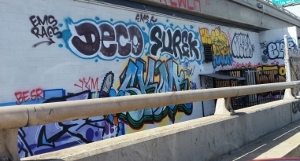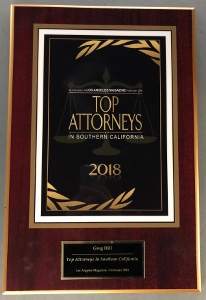California Penal Code § 594 defines vandalism as defacing another’s property with graffiti “or other inscribed material,” or damaging or destroying another’s property. To be convicted of violating section 594, one must commit the act maliciously, which means with the intent to annoy or injure another person. Accidental conduct certainly does not qualify.
Brief Synopsis: Vandalism is defined as defacing another’s property with graffiti or other inscribed material, or damaging or destroying another’s property. One must do so maliciously, i.e. to annoy or intend to injure another person.
A complaint alleging a violation of section 594 can be filed as a misdemeanor or a felony. When the value of the damage is less than $400, the complaint is for a misdemeanor violation; when it is $400 or more, the complaint is filed as a felony. However, it is possible to resolve cases as misdemeanor vandalism when the value of the damage is over $400 and defendant has no prior record.
Vandalism may also be alleged as an infraction under Penal Code § 640.5 or § 640.6 when the cost of the damage is less than $250 and it is one’s first conviction.

If one is convicted of violation of Penal Code section 594 as a felony, the maximum prison sentence is three years and fines of up to $10,000. When the property damage exceeds $10,000, the fines can increase to up to $50,000.
Perhaps most punishing, however, is that the court may also suspend one’s driver’s license for up to two years, or if one does not have a driver’s license, the court may delay your eligibility for a driver’s license for up to three years. When this happens, defendant should explore the possibility of applying to the D.M.V. for a “Critical Needs” restricted license.
If probation is granted, the judge can order the defendant to counseling services and community service, including cleaning or repairing the same property defendant damaged.
If the conviction is for a misdemeanor violation of Penal Code section 594, the maximum jail time is one year and the maximum fine is $1,000 if the damage to the property is less than $400. When the damage to the property is $400 or more, measured by the cost to repair or replace the damaged item, the maximum fine is $10,000. When the damage to the property exceeds $10,000, the maximum fine is $50,000. The judge can also order defendant to community service and classes, while imposing the same driver’s license conditions as described above.
If one has two prior vandalism convictions and one was either incarcerated or placed on probation is at least one of the prior cases, the court must sentence defendant to jail (if a misdemeanor) or prison (if a felony).
There are certain types of vandalism that receive special treatment. If the vandalism is to a church or place of worship, the case is filed under Penal Code § 594.3. If the vandalism is to a cemetery or mortuary, it is charged under Penal Code § 594.35. Both of these charges are “wobblers,” meaning the case can be filed as a felony or a misdemeanor. If the vandalism is alleged as a “hate crime,” the case is always filed as a felony. When the vandalism is “committed for the benefit of, at the direction of, or in association with any criminal street gang” (Penal Code § 186.22), defendant can face significant additional time in custody.

When the vandalism is on or near a highway or freeway, the charge is for a violation of Penal Code § 640.7 (highways) or § 640.8 (freeways). For a first offense, the maximum jail term is six months. For a second offense, it is one year in county jail, as well as a maximum $1,000 fine for damage to a highway and $5,000 for damage to a freeway. With either type of violation, graffiti removal or counseling is also usually ordered.
There certainly are defenses to a charge of vandalism. Mistaken identity often applies. A phone call to the police complaining of vandalism may be based on speculation that a person did something, as the complaining party did not see anything occur. However, the complaining party may be motivated by revenge or jealously amid a romantic break-up, so the complaining party seeks to use the police to harass the supposed suspect. The complaining party may also take the adage, “the best defense is a good offense” to heart by trying to cover up his or her own vandalism by accusing another of doing the very deed.
Sometimes, police even single out a person to wrongfully arrest, in which case defendant may want to file a
Pitchess Motion to examine the officer’s personnel record to see if he or she has a prior history of making false arrests, coercing admissions, racial profiling or fabricating facts on a police report.
Second, and less common, is the accident defense. This applies when one does not mean to damage another’s property, one cannot act with malice. However, one can still be charged with trespass (Penal Code § 602).
For more information about vandalism, graffiti and restitution, click on the following articles:
- In Juvenile Vandalism Case Involving Graffiti, Restitution Cannot Include Investigation Costs
- Felony Vandalism Charges Proper When Prosecutor Adds Damages up from Multiple Victims
- Restitution Award in DUI Case Reversed and Vacated Because Trial Court’s Calculation Not Rational
Contact Greg Hill & Associates

